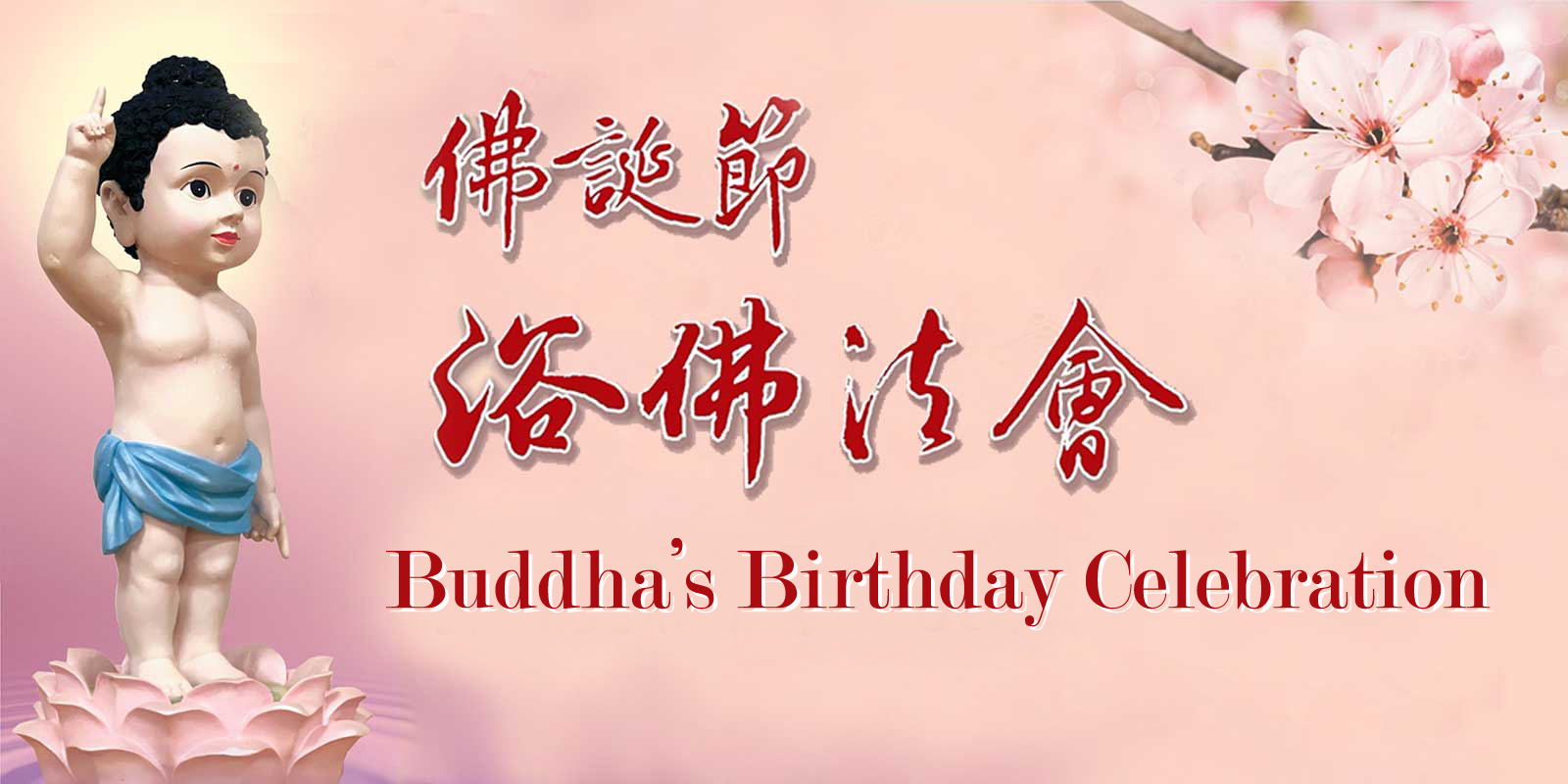Bathing Buddha: |
5/3 ~ 5/5 (Sat. ~ Mon.)
5/3 (Sat.) 9:00 am - 5:00 pm
|
Chanting Service: |
5/4 (Sun.) 10:30 am - 12:00 pm |
Items Offering: |
Sponsor, Donation for Blessing, Food Offering, Flower/Fruit Offering |
Form: |
Online form
|
Address: |
1111 International Pkwy. Richardson, TX 75081 |
Buddha's Birthday
On April 8, 3051 years ago, Queen Maya of Kapilavastu, India, gave birth to Prince Siddhartha under the asoka tree in Lumbini Park. He was to become the Buddha. After his birth, with one hand pointing to the heavens and the other to the earth, the prince exclaimed, “I am the supreme of all heaven and earth.” The meaning of which is, “In all of the universe, only realizing our own Buddha nature is the most noble and supreme.” Subsequently, the Four Heavenly Kings and nine dragons rained down fragrant water to bathe the young prince.
Hence, Buddhists conduct “Bathing the Buddha Ceremony” and prepare a tonic with fragrant herbs and spices to bathe Buddha statues for celebration of the Buddha’s birthday.
The meaning of bathing the Buddha: When we bathe the Buddha statue, we should sincerely pray for purification of our own defilements of greed, hatred, and anger. We should pray for peace and harmony everywhere, so that there is no more violence, deceit, and evil in the world. We should wish for our troubled world be transformed into a pure land and all minds be guided onto the bodhi path. This is the true meaning of bathing the Buddha.









